Home >Technology peripherals >AI >Will ultra-efficient artificial photoelectric neurons become a reality? 30,000 times faster than natural neurons, research published in Nature sub-journal
Will ultra-efficient artificial photoelectric neurons become a reality? 30,000 times faster than natural neurons, research published in Nature sub-journal
- WBOYWBOYWBOYWBOYWBOYWBOYWBOYWBOYWBOYWBOYWBOYWBOYWBforward
- 2023-04-12 17:04:031033browse
In artificial neural networks, many components called neurons are embedded in data and work together to solve problems such as face recognition. Neural networks repeatedly adjust their synapses - connections between neurons - to determine whether the resulting behavioral pattern is a better solution. But over time, the neural network will eventually find the optimal behavior pattern in the results of the calculation. It then selects these modes as default values, mimicking the human brain's learning process.
While AI systems are increasingly finding more real-world applications, they still face significant challenges given the limitations of the hardware used to drive them. To solve this problem, researchers have developed neuromorphic computer hardware inspired by the human brain.
For example, a neuromorphic microchip component might emit a spike or generate an output signal only when it receives a specific number of input signals within a certain period of time. This is a strategy that more closely simulates the way real biological neurons behave. Compared with typical artificial neural networks, these devices will only emit very few spikes, so much less data will be processed, while in principle requiring much less power and communication bandwidth.
However, neuromorphic hardware often uses traditional electronics, which ultimately limits the complex functionality and signaling speed they can achieve. For example, each biological neuron can have tens of thousands of synapses, but neuromorphic devices have difficulty connecting their artificial neurons to each other. An effective solution to this problem is multiplexing, that is, one signal channel can carry more signals at the same time. However, as chips become larger and more sophisticated, computing speeds can slow down.
In a recent new study, researchers at the National Institute of Standards and Technology (NIST) explored the use of optical transmitters and receivers to connect Neurons. In principle, optical links, or optical waveguides, could connect each neuron to thousands of other neurons at light speed communication rates. Relevant papers were published in Nature Electronics.
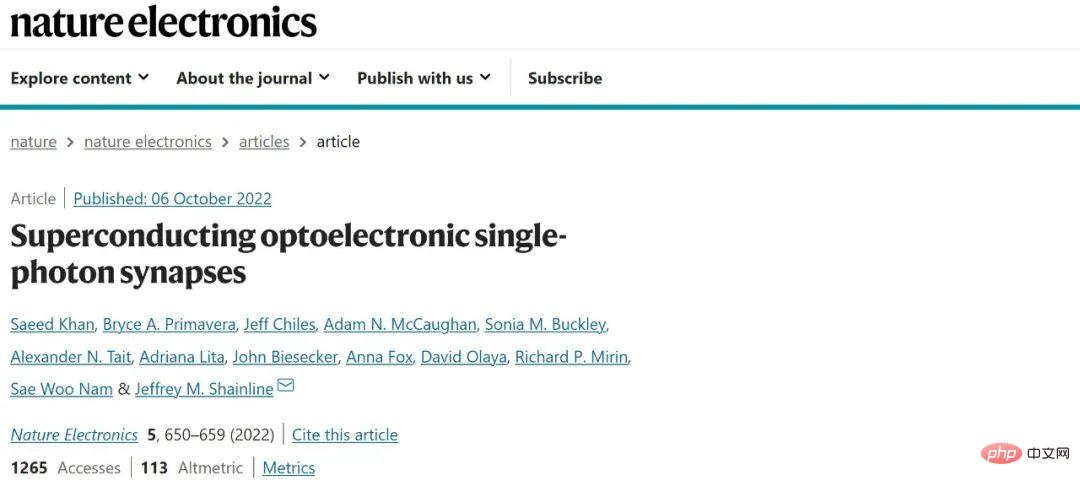
Research Overview
Researchers
used a superconducting nanowire device capable of detecting single photons, which can detect These optical signals are the smallest units and can be viewed as the physical limit of energy efficiency. The rendering below shows how superconducting circuits that simulate neuronal synapses (the interface points between neurons in the brain) could be used to create the artificial optoelectronic neurons of the future.
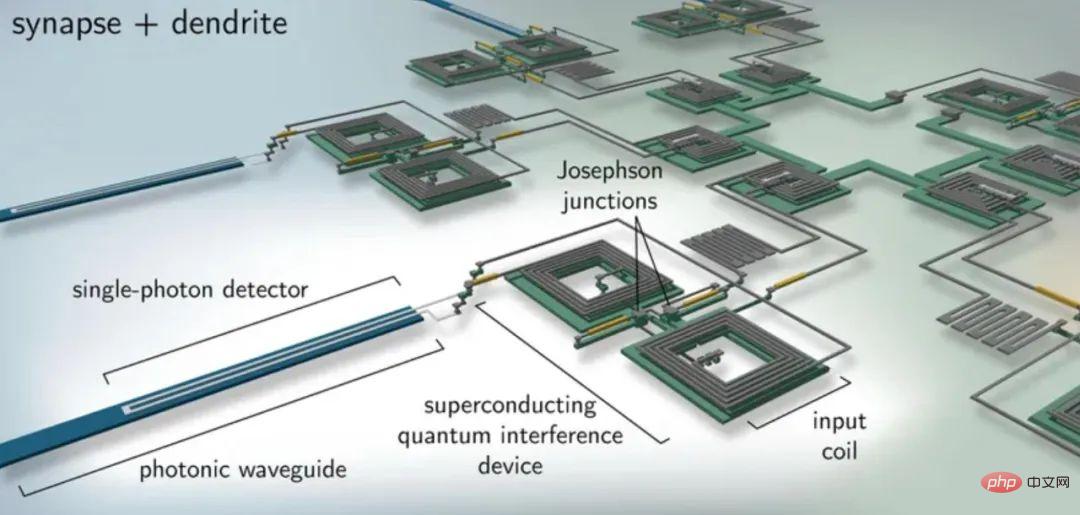 Performing photonic neural computations is often tricky because they typically require optical cavities that can capture light for significant periods of time. Creating such cavities on integrated microchips and connecting them with many waveguides is extremely challenging.
Performing photonic neural computations is often tricky because they typically require optical cavities that can capture light for significant periods of time. Creating such cavities on integrated microchips and connecting them with many waveguides is extremely challenging.
So the researchers developed a hybrid circuit system in which the output signal from each detector is converted into ultrafast electrical pulses about 2 picoseconds long.
These pulses are caused by a single magnetic fluctuation or magnetic flux within a network of superconducting quantum interferometers, or a superconducting quantum interferometer (SQUID). Jeffrey Shainline, a researcher at NIST and corresponding author, said, "For many years, we have been working hard on theoretical research to discover the nature of the physical limits that will enable technology to achieve neuromorphic computing. Principle. The pursuit of this goal led us to this concept - combining optical communication at single photon energy levels with neural network calculations performed by Josephson junctions."
超The conductive quantum interferometer (SQUID) is composed of one or more Josephson structures. It is a sandwich structure with superconducting materials on the top and bottom, separated by an insulating film in the middle. If the current through the Josephson junction (JJ) exceeds a certain threshold, the superconducting quantum interferometer will start to produce magnetic flux.
After sensing a photon, a single-photon detector (SPD) generates magnetic flux quanta, which are then collected as electric current in the SQUID's superconducting loop. This stored current serves as a form of memory, recording how many times the neuron spiked.
Figure 2 below shows the layout and completed circuit. a is the 3D layout of the entire synaptic circuit; b is the microscope image of the completed manufacturing; c is the SPD layout; d is the SPD in manufacturing; e is the layout of JJ and shunt resistor; f is the JJ and shunt in manufacturing; g is the SQUID used for DR (dendritic receiving, dendritic receiving) cycle; h is the DR SQUID in manufacturing.
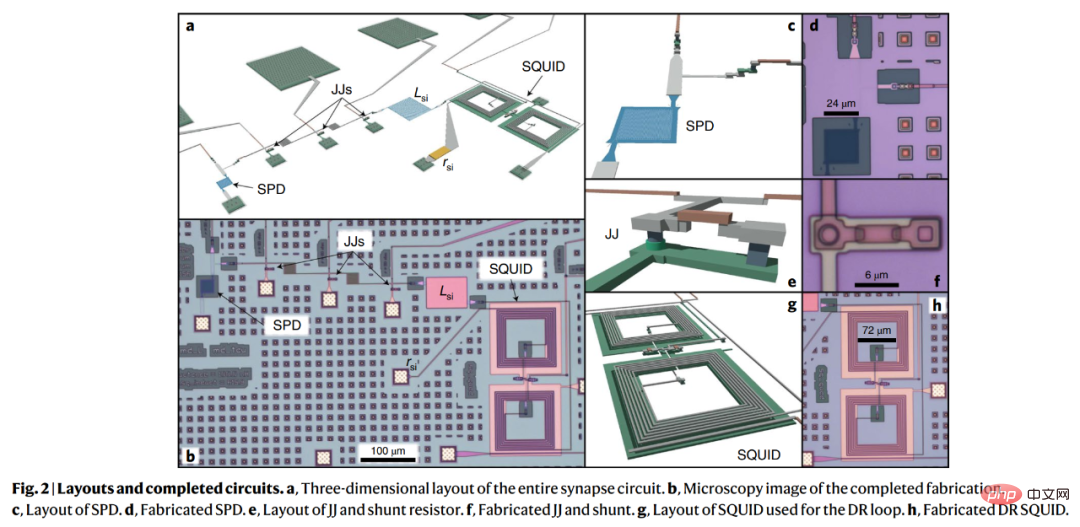
Shainline exclaimed, “It was actually quite easy to make the circuit work. It took quite a bit of time during the design phase to fabricate and experiment, but in reality On the other hand, when we first fabricated these circuits, they were already working. This bodes well for the future scalability of such systems."
Researcher Integrating the single-photon detector with the Josephson junction creates a superconducting synapse. They calculated that the peak frequency of synapses can exceed 10 million Hz, while each synaptic event consumes approximately 33 attojoules of energy (1 attojoule is equal to 10^-18 joules). By comparison, the maximum average spike rate of human neurons is only about 340 Hz, while each synaptic event consumes about 10 femtojoules (1 femtojoule is equal to 10^-15 joules).
Figure 3 below shows the characteristics of a single synapse with a time constant of 6.25 μs and an inductance of 2.5 μH. Measurements show actual values of 8.06 μs and 3.2 μH respectively.
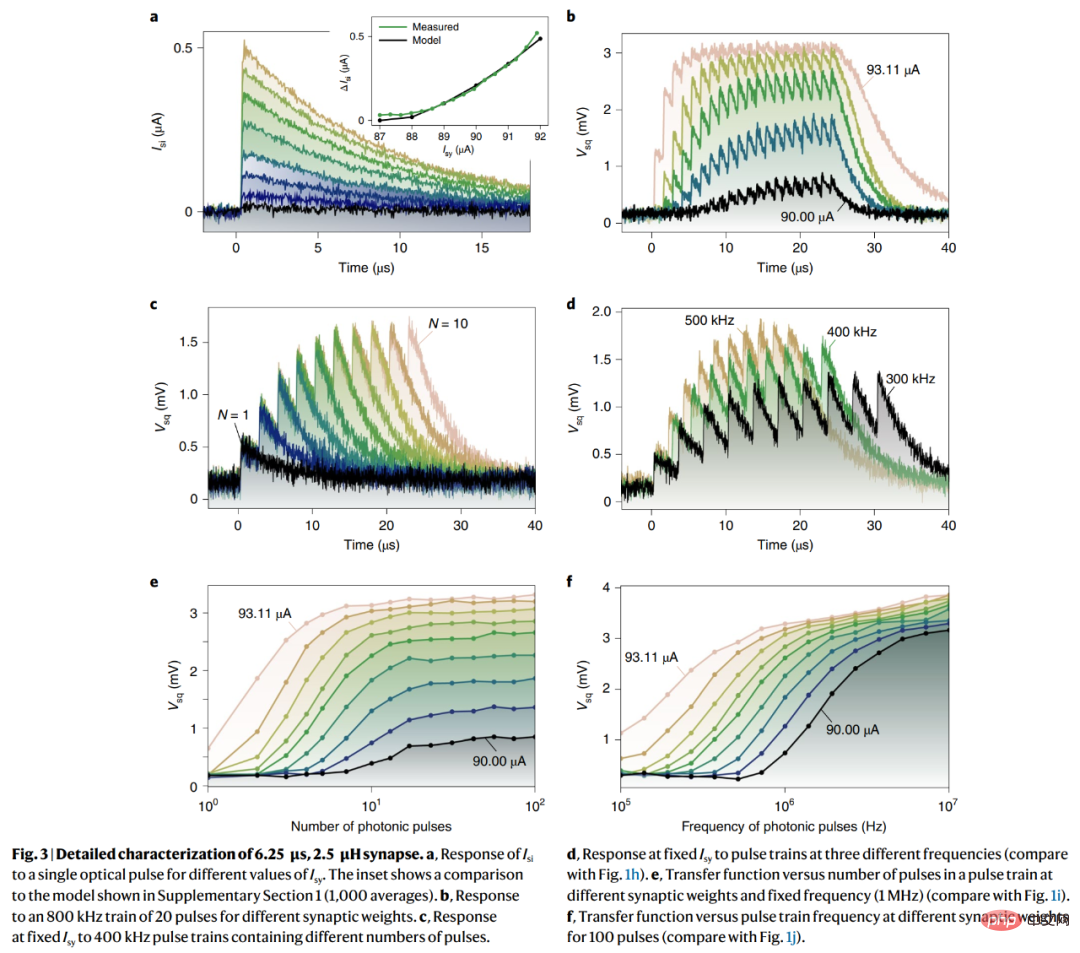
Figure 4 below demonstrates that synaptic transfer functions can be engineered over a wide range of time scales.
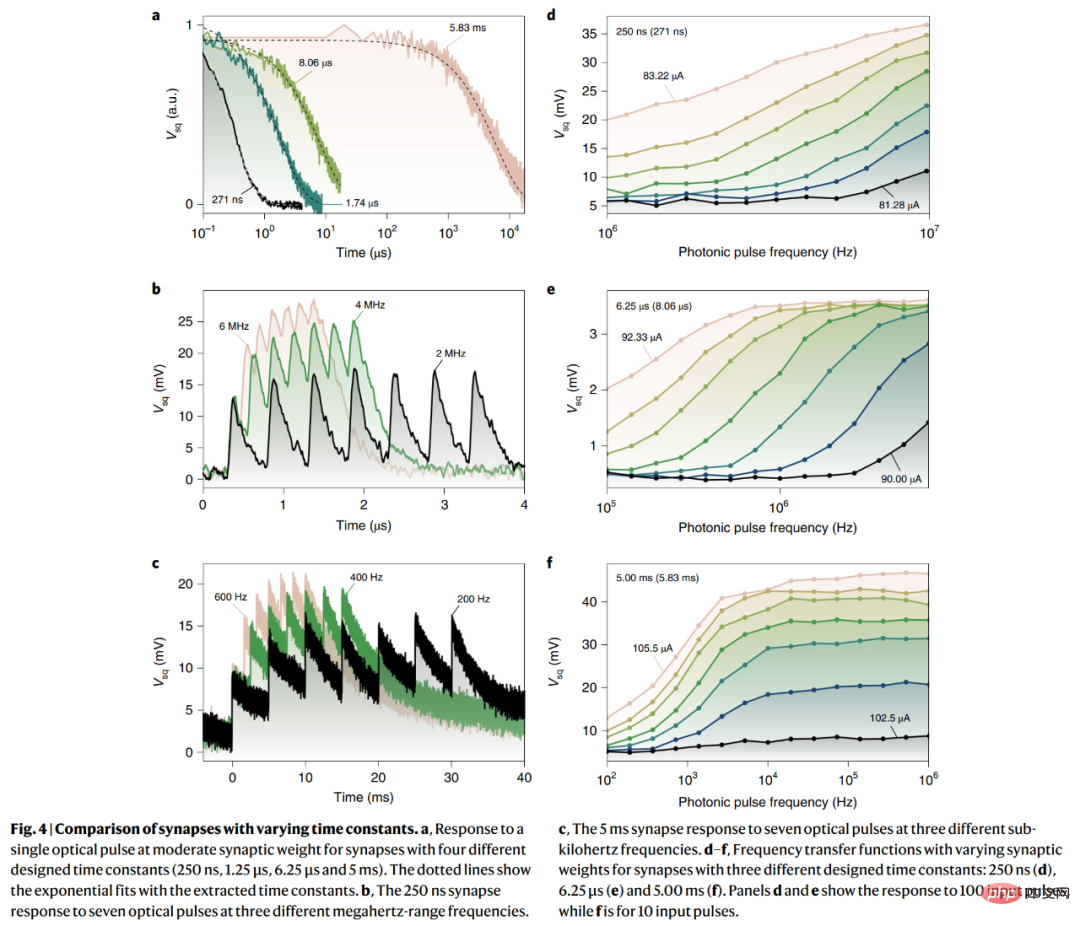
In addition, researchers can realize the output time of these circuit system devices changing from hundreds of nanoseconds to milliseconds. This also means that these hardware can be connected to a range of systems, from communication between high-speed electronic devices to more leisurely interactions between humans and machines.
In the future, the researchers will combine the new synapses they developed with on-chip light sources to create fully integrated superconducting neurons. Shainline said, "There are still huge challenges in achieving fully integrated superconducting neurons, but if we can integrate that last part, then there is every reason to believe that it may eventually become a powerful computing platform for artificial intelligence."
The above is the detailed content of Will ultra-efficient artificial photoelectric neurons become a reality? 30,000 times faster than natural neurons, research published in Nature sub-journal. For more information, please follow other related articles on the PHP Chinese website!
Related articles
See more- Technology trends to watch in 2023
- How Artificial Intelligence is Bringing New Everyday Work to Data Center Teams
- Can artificial intelligence or automation solve the problem of low energy efficiency in buildings?
- OpenAI co-founder interviewed by Huang Renxun: GPT-4's reasoning capabilities have not yet reached expectations
- Microsoft's Bing surpasses Google in search traffic thanks to OpenAI technology

